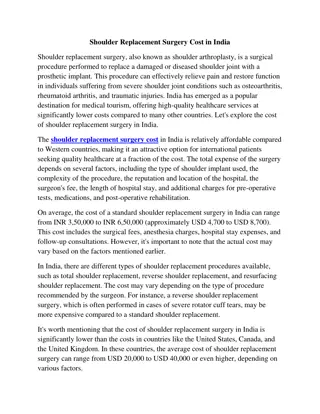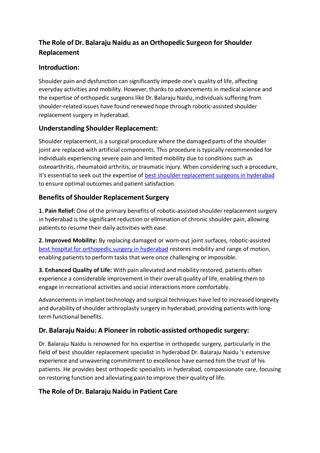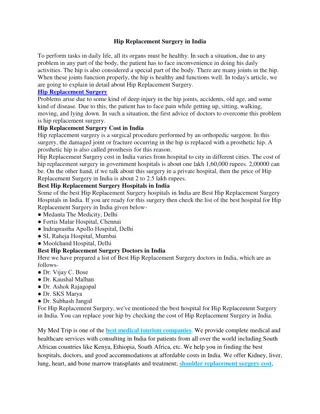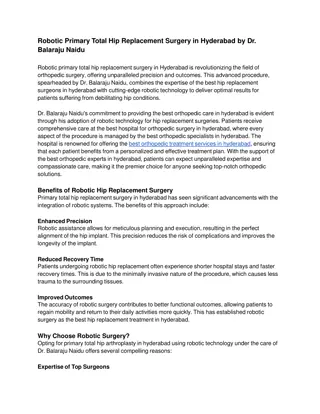
PASA Replacement Project Industry Update Dec 2020
"Stay informed with the latest updates on the ST.PASA Replacement Project in the energy industry, including objectives, progress, system design, reliability, benefits, proof of concept, key themes, and next steps. Discover how this project aims to enhance the NEM for the future."
Download Presentation

Please find below an Image/Link to download the presentation.
The content on the website is provided AS IS for your information and personal use only. It may not be sold, licensed, or shared on other websites without obtaining consent from the author. If you encounter any issues during the download, it is possible that the publisher has removed the file from their server.
You are allowed to download the files provided on this website for personal or commercial use, subject to the condition that they are used lawfully. All files are the property of their respective owners.
The content on the website is provided AS IS for your information and personal use only. It may not be sold, licensed, or shared on other websites without obtaining consent from the author.
E N D
Presentation Transcript
ST PASA Replacement Project Industry Update (Dec 2020)
1. The ST PASA Replacement Project 1. Objective & Progress to date 2. Proposed HLD 1. Key Themes 2. System Design 3. Determination of Reliability 4. Benefits of the Proposed Approach 3. Proof of Concept 1. Forecasting at nodal level 2. Accounting for uncertainty 3. The optimiser 4. Work Still In Progress LOR Levels Run types Frequency of runs Display Other topics 4. Next Steps 5. Communication with AEMO Agenda 2
ST PASA Replacement Project Objective Objective: To do a holistic review of the PD/ST PASA methodology and develop a system that would serve the NEM now, and into the future. Progress to date: Progress to date: AEMO engaged Intelligent Energy Systems (IES) & Steve Wallace Advisory (SWA) to assist with Industry consultation Review of international practices Survey off-the-shelf IT solutions available Publication of report including o Business requirements o High level design (HLD) Link to ST PASA Webpage The project team is in the middle of the development of a Proof of Concept Draft Rule Change proposal 3
Key themes of HLD Reliability is a physical system issue hence the model should reflect the physical reality instead of the market Full network model Forecast at nodal level (load on bus) Determine uncertainties in demand forecast, VRE forecasts and scheduled unit forced outages They become an input into the model (known as Uncertainty Margins ) Better energy storage models Identify system security issues like low inertia, system strength etc Suggest lowest cost RERT activation schedules, if required 4
Proposed PD/ST PASA System Scenario Manager Base runs Inputs Inputs Outputs Outputs Post-processing Post-processing Forecasting & Probability Calculations Nodal Load Forecast VRE Forecast Forecasting & Probability Calculations Nodal Load Forecast VRE Forecast Forced Outage Rates (TBC) Forced Outage Rates (TBC) Forecasting & Probability Calculations Nodal Load Forecast VRE Forecast Forced Outage Rates (TBC) Uncertainty Margins Uncertainty Margins Uncertainty Margins Scenarios e.g. extreme events, high impact outages etc AEMO AEMO AEMO Standing Network Data Network topology List of credible contingencies List of credible contingencies List of credible contingencies Standing Network Data Network topology Network topology Standing Network Data Reliability Notices Reliability Notices Generation Pattern Generation Pattern Generation Pattern Other Network Data Stability and System strength constraints constraints constraints Other Network Data Other Network Data Stability and System strength Stability and System strength Identify Network Outages Identify Network Outages restricting the network restricting the network Optimiser Auto generate thermal constraints Optimiser Auto generate thermal constraints Carry out several runs Carry out several runs Market Data RERT Contracts RERT Contracts RERT Contracts Market Data Market Data Nodal Deficits Nodal Deficits Nodal Deficits Inertia & System Strength Issues Issues Inertia & System Strength Planned Network Outages Planned Network Outages Planned Network Outages Equipment Ratings Equipment Ratings Equipment Ratings NSPs NSPs NSPs RERT Schedule (if required) required) required) RERT Schedule (if RERT Schedule (if Internal/External Displays e.g. Heat Maps e.g. Heat Maps Internal/External Displays Participants Participants Participants Market Market Market Generator Bid & PASA Generator Bid & PASA Availabilities Availabilities Generator Bid & PASA Availabilities Energy limitations Energy limitations Energy limitations 5
Determination of Reliability the new paradigm Current ST PASA Current ST PASA Create generation profile that maximises reserve by maximising supply to RRN n-1 security constraints for predefined network configurations (Transmission contingencies only) Proposed System Proposed System Create generation profile that meets the demand at each node Objective Objective Subject to Subject to n-1 security constraints for any network configuration and set of contingencies (Transmission and generator contingencies) 50% POE demand + Uncertainty Margin Deficit = Uncertainty Margin + 50% POE Demand - Gen Demand Used Demand Used Reliability Reliability Measure Measure LOR Declared LOR Declared 50% POE demand Reserve = Gen 50% POE Demand LOR 3 if Reserve < 0 LOR 2 if Reserve <= LOR 2 level LOR 1 if Reserve <= LOR 1 level Deficit > 0 The three LOR levels are discussed later in the presentation Note: Since the generator contingencies are already considered while creating a gen profile they cannot be used as a method for determining the different levels of LOR LOR2/1 level = Max (LCR/LCR2, FUM) where LCR represents either a generator or interconnector contingency 6
Determination of Reliability the new paradigm Current STPASA Proposed System 700 10000 12000 3500 600 3000 10000 8000 500 2500 8000 400 2000 6000 6000 1500 300 4000 4000 1000 200 2000 500 2000 100 0 0 1 3 5 7 9 11 13 15 17 19 21 23 25 27 29 31 33 35 37 39 41 43 45 47 0 0 1 3 5 7 9 11 13 15 17 19 21 23 25 27 29 31 33 35 37 39 41 43 45 47 50 POE Demand + UM(90) Gen Profile (95) Deficit (90) Gen Profile (90) 50 POE Demand + UM(99) Deficit (95) 50 POE Demand + UM(95) Gen Profile (99) Deficit (99) Gen Profile 50 POE Demand FUM LOR1 Level LOR2 Level LOR Reserve 7
Benefits of the Proposed Approach Changing network more distributed generation Intra-regional contingencies have a more significant impact A full network model provides flexibility in modelling various/unforeseen network configurations e.g. separation not occurring at regional boundary Information about network congestion at a nodal level hence provide information about impact of intra-regional contingencies Better forecast of demand and VRE based on locational weather patterns Better representation of WDR and DER 8
Proof Of Concept A PoC is being conducted to determine the feasibility and practicality of the proposed solution This work includes four major workstreams. Three of the workstreams involve proving that o reasonable forecasts of demand and variable renewable energy (VRE) can be produced at a nodal level; o the proposed theory behind developing uncertainty margins at a nodal level can be applied practically; and o an off-the-shelf software can be utilised (with some configuration) to develop a full network model that determines the appropriate generation dispatch profile and also suggests a RERT dispatch profile, if required. The fourth work stream involves drafting the NER and related document changes that may be required to implement the new solution. Based on 30 Dec 2019 event Extreme day - hot temperatures, high demand, bushfires Unplanned outage of 051 (Lower Tumut to Wagga 330 kV) line leading to reduction of ~1000 MW of reserve in Victoria Forecast LOR 2 Activation of RERT 9
Forecasting at nodal level Load & VRE Forecast Most Probable Forecast 50 POE For VRE forecasts For VRE forecasts we already receive DUID level forecasts from AWEFS and ASEFS these can be reused. For load forecasts For load forecasts: The existing load forecasting methodology uses bespoke sub-region (area-level) load forecast models from the DFS. For the PoC these existing load forecast models are used with the forecasts disaggregated to the nodes using a load factor analysis based on the correlations of each node to the sub-regional load forecast. The intention in a full implementation is to have the ability to create load forecasts at the zonal-level as and when the load forecasting system is further developed. The initial thought is that the zonal-level will roughly correspond to micro-climate zones, based on discussion with other ISOs around pros/cons/accuracy/scalability/maintainability trade-offs. 10
Accounting for uncertainty Accounting for uncertainty: Uncertainty Margin An amount of MWs that represents expected forecast error given a confidence level, used to adjust the load and VRE forecasts and ensure sufficient supply to meet demand Understanding of forecasting errors at different forecast lead times and in different conditions (such as weather) Margins based on distribution of forecast errors Note that uncertainty margins should eventually incorporate the forced outage rates for dispatchable generators. The optimiser will take into account requirements to manage frequency via FCAS requirements (still to be confirmed). How to determine the uncertainty margin? A few options: 1. Empirically from historical forecast errors under different conditions Pros: computationally simple; Cons: subject to discontinuity and difficult to scale. 2. Develop a model to predict forecast error given expected conditions Pros: dynamic, continuous values under varying conditions; Cons: large amount of computer processing power required to train models or will require substantial statistical modelling to find a suitable parametric model for how the distribution of forecast errors changes over time and with forecast weather conditions. How to determine the confidence level? Work in progress x% confidence level means that we are x% confident that the forecast error will not Do we select a 90%, 95%, 99% or some other confidence level? Ideas: Confidence level can be selected by performing a sensitivity analysis of case studies using different confidence levels Assessment of false-positives, true-positives, false-negatives and true-negatives Different confidence levels for different horizons or load/generator types Ultimately the approach to determining the confidence intervals should be tuned to be consistent with the reliability standard not exceed this value 11
Accounting for uncertainty Preliminary numbers for the PoC scenario (30/12/2019 14:30) showing the reliability margin for the load forecast under different confidence levels and different forecast horizons. These numbers WILL change as the modelling is refined. Region Region Confidence level 90% QLD NSW VIC SA TAS 4hrs ahead 4hrs ahead 24hrs ahead 24hrs ahead 90% 300MW 400MW 380MW 120MW 140MW 7days ahead 7days ahead 90% 380MW 460MW 440MW 150MW 140MW 95% 370MW 590MW 550MW 180MW 160MW 99% 890MW 1100MW 1120MW 400MW 650MW 95% 400MW 600MW 570MW 200MW 190MW 99% 930MW 1140MW 1160MW 410MW 660MW 95% 620MW 790MW 750MW 240MW 210MW 99% 1130MW 1770MW 1810MW 540MW 710MW 270MW 390MW 360MW 110MW 100MW 12
The optimiser The optimiser engine will determine the most economic generation profile that would meet the load (50 POE demand plus Uncertainty Margin) subject to n-1 security (transmission plus generation) constraints + frequency control constraints (TBD) To prove that an off-the shelf software can be used to develop the network model and determine an appropriate generation dispatch profile Have reached out to some software vendors 13
The optimiser Progress to date Have run some basic runs Results being examined Results being examined For finalised PoC Full n-1 secure system (using thermal, stability & system strength constraints) Load forecast plus uncertainty margin Multiple intervals 14
WIP LOR Levels Rules require AEMO to determine and report on at least three loss of load probability levels at which AEMO will declare a corresponding LOR condition No direct co-relation between current LOR levels and the new paradigm. AEMO will work with stakeholders in the project s design phase to determine the intervention level. The following slide puts forward a proposal of determining the new LOR levels and corresponding runs 16
Current ST PASA Current ST PASA Proposed System Proposed System WIP LOR Levels Current LOR Levels Current LOR Levels Intervene Intervene in Market? in Market? Y Proposed LOR levels Proposed LOR levels Intervene Intervene in Market? in Market? Y LOR 3 Cannot meet demand if we have a credible network contingency LOR 2 Cannot meet demand if we have a credible network contingency OR a trip of the largest generator (in that region) (FUM is also considered at this point) LOR RED Cannot meet demand if we have a credible network contingency OR a trip of any generator in the NEM Y Demand = 50 POE demand plus Uncertainty Margin at x%1 confidence level LOR 1 - Cannot meet demand if we have a credible network contingency OR a trip of the largest and the second largest generator (in that region) (FUM is also considered at this point) N LOR ORANGE Cannot meet demand if we have a credible network contingency OR a trip of any generator in the NEM N Demand = 50 POE demand plus Uncertainty Margin at y% confidence level (where y>x) LOR YELLOW Cannot meet demand if we have a credible network contingency OR a trip of any generator in the NEM N 1 x% is the AEMO intervention level Demand = 50 POE demand plus Uncertainty Margin at z% confidence level (where z>y>x) 17
700 WIP LOR Levels 10000 600 8000 500 400 6000 300 4000 200 2000 100 0 0 1 2 3 4 5 6 7 8 9 10 11 12 13 14 15 16 17 18 19 20 21 222324252627282930 31 323334353637383940 41 42434445464748 50 POE Demand + UM(90) Gen Profile (95) Deficit (90) Gen Profile (90) 50 POE Demand + UM(99) Deficit (95) 50 POE Demand + UM(95) Gen Profile (99) Deficit (99) Example above would be LOR RED for Interval 36 LOR ORANGE for Intervals 34,35 & 37 LOR YELLOW for Intervals 33, 38 - 41 18
WIP - Run types To determine the LOR levels described previously we will require the following runs Base run load forecast + uncertainty margin at x% confidence level Include network and generator contingencies to ensure n-1 secure Create a dispatch profile and show deficits at a nodal level If any deficits are determined, then create a RERT schedule in case intervention is required AEMO will intervene and commit RERT based on this run only Other runs at a higher confidence levels This would be used for situational awareness only provide a warning to market Scenario run Other runs used for AEMO s situational awareness only. E.g. n-2 security run, extreme weather scenario 19
WIP frequency of runs Requirements for notification of reliability issues vary according to time horizons The following could be considered as an option Start Interval Start Interval Now End of current pre-dispatch period 4 days End Interval End Interval End of current pre-dispatch period 4 days 7 days Interval length Interval length Frequency 30 minutes 30 minutes 30 minutes Frequency 30 minutes 1 hour 2-4 hours Note: No analysis has been done yet on how long each run takes to run Would have to look at continuity of results between runs 20
WIP - Display Looking at heat maps as potential method of displaying areas of concern Example on right Optimiser results for 1430 hrs 30 Dec 2019 Based on 24 hour-ahead forecasts @99% Confidence level Supply deficits shown by circle colour and size Large 1100 MW deficit at Melbourne (VIC) (red dots) Minor deficits at Bannerton (VIC), Blackwater (QLD) and Brisbane (QLD) (green dots) 21
Other areas still be considered How energy limited plant and energy storage devices are modelled How/if generator forced outage rates are used in determining uncertainty margins Currently we think the outages rates can be incorporated into the uncertainty margin via a convolution method How to provide information about network outages that are restricting the network flow and contributing to deficits How/if FCAS or spinning reserve is considered How inertia and system strength issues will be identified How DER is modelled 22
Next steps Deliverable/Milestone Deliverable/Milestone Finalise PoC Detail Detail Finalise PoC , showcase results and seek senior management approval to continue Commence development of detailed design (pending budget approval) Showcase PoC results and consult with Industry Indicative Date Indicative Date Jan 2021 Commence Detailed Design phase Stakeholder Consultation/s Rule change proposal Commence Implementation Phase Proposed Completion Feb 2021 Feb 2021 and beyond Q1 2021 Q4 2021 Develop and submit Rule Change proposal Commence implementation of new design (pending budget approval) Proposed Go Live Q3 2022 23
Communication with AEMO Any communication including comments/questions can be sent to STPASAReplacement@aemo.com.au 24






















